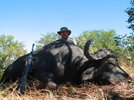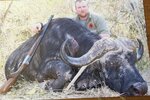This is going to be a very long post, so buckle up. TLDR version: Sorry CraigC, energy matters.
I found an excellent resource that might help us settle our discussion regarding the value of energy: “Conventional Warfare: Ballistic, Blast and Burn Injuries” published by the Borden Institute. Here is the Institute’s description of itself:
“The Borden Institute was established in 1987 at Walter Reed Army Medical Center in Washington, DC, to foster and promote excellence in military academic medicine through the development and publication of military medical scholarship. Now located at Joint Base San Antonio, Texas, the Borden Institute is an agency of the US Army Medical Center of Excellence.”
You can read all of the book by downloading chapters at the this link:
https://medcoe.army.mil/borden-tb-conventional-warfare-ballistic-blast
The relevant chapter for our discussion is Chapter 4: The Physics and Biophysics of Wound Ballistics. According to the Borden Institute, the sides in this debate “Energy is a useless metric” vs. “Energy obviously matters” have been talking past each other because there is a key difference in the way that high velocity rounds (impact velocity >2,000 fps) and intermediate velocity rounds (velocity between 1,100 - 2,000 fps) create wounds. Here are a few key points, all drawn from Chapter 4:
- Wounds from projectiles that impact above 2,000-2,300 fps are fundamentally different than woulds produced by projectiles impacting below that velocity. The book uses the term “explosive effect” which is likely what many hunters call “hydrostatic shock.” Here is the relevant quote (p. 111):
"Since the first observations of 'explosive' wounds occurred when 'high velocity' bullets were fielded in the mid-nineteenth century, it seems reasonable to connect the two. Therefore, this textbook defines high velocity as that at which explosive effects begin to be commonly seen (that is, 600-700 m/s or 2,000 – 2,300 fps). Velocities between 1,100 and 2,000 fps are known as intermediate or medium.”
- The minimum velocity for a rounded or pointed projectile to penetrate human skin is about 250 fps (also p. 111). This is presumably a higher number for many of the game animals we are interested in. Why does this matter? When a projectile impacts at a velocity close the minimum penetration velocity it will loose a substantial portion of it’s velocity as it penetrates (p. 119). Why does this matter? Spoiler alert: velocity and energy matter to wound creation.
- The book also provides the equations the describe penetration on p. 119. Here are the key takeaways according to the authors (below bullets are quotes):
- The greater a projectile’s mass, the greater will be its depth of penetration.
- The greater a projectile’s residual velocity, the greater will be its depth of penetration.
- The greater a projectile’s sectional density, the greater will be its depth of penetration.
In other words, no surprises regarding the physics of projectile penetration.
- Next up, 5 pages of text and diagrams (p. 120 -124) discussing energy transfer to the target because, for all projectiles, the energy transfer to the tissue is what creates the wound.
- There are two nice diagrams on p. 124 showing the difference between the wound cavities created by low velocity projectiles, which the book defines as below the speed of sound or 1,100 fps) and high velocity. Unfortunately, the book doesn’t discuss intermediate velocity projectiles, presumably because they aren’t typically in military use.
- Bullet construction matters. There are 5+ pages (end of p.123 and p. 125-129) discussing the effects of bullet shape and construction. Of course, the bullets discussed in this text are FMJ as required by the Geneva Convention. The bullets we use will be somewhat different as they are much more likely to deform with out fragmenting. But earlier in the text, they discuss that it is the rapid change in shape of the bullet, either through deformation (such as “mushrooming” for our bullets and fragmentation in FMJ and hunting bullets), that causes the non-uniform wound tracts that we typically see with high velocity rounds.
- Blunt bullets will cause a much larger entrance wound as they very quickly transfer energy.
- Fragmentation and yaw create significant wounding in high velocity, FMJ bullets.
- Interesting tidbit, a M193 bullet (5.56 fired by the M16A1) “might break up at about 600 m/s [about 2,000 fps] and break up is assured at speeds faster than 700 m/s [about 2,300 fps].”
- There then follows 10 pages (130-139) discussing the physics of wound creation, particularly the four mechanisms of energy transfer in tissue: cutting, stretch and shear, compression, and heafiny (heat energy transfer). Cutting and heating are the only direct effects of the bullet (that is only tissue in direct contact with the bullet are cut and heated) while stretch, shear, and compression are indirect (that is energy is transferred to tissue the bullet does not contact).
- Temporary cavity depends on the tissue. It tends to be small in lungs but large in liver, heart, and brain.
- The volume of the temporary cavity is non-linear with respect to velocity, p.134; in other words, increasing velocity 20% will cause a much larger than 20% increase in the temporary cavity volume.
- The more energy that is transferred, the greater the temporary cavity.
- “Cavitation is not usually significant when the striking velocity is less than 1,000 fps…”
- Referring to a particular a set of experiments, “Clearly, temporary cavitation contributed to the size of the wounds…”
I’ve been reading this for about 2 hours and am still digesting it. Time to get some of my paid work done. So what are the takeaways? Energy matters because energy is what does work and creates the wound. Higher velocity equals greater energy (because energy increases with the square of velocity). Bullet construction is very important. Ideally, we want a bullet that will penetrate into the vitals then substantially deform as it passes through the vitals, transferring a lot of energy into wounding the vitals. Some of us may prefer that the bullet maintain enough velocity (and diameter) to make an exit wound for blood tracking. Some of us may prefer a bullet that fragments or “explodes” inside the vitals creating the largest possible wound to the vitals.
So my conclusion is that, if you use a bullet that is designed to deform and transfer all or nearly all of it’s energy within the vitals, then using energy to choose between cartridges is a useful approach. After reading and thinking about this, here is how I would approach choosing a cartridge:
- What is my quarry? How far will the bullet need to penetrate to reach the vitals? How likely am I to be shooting through bone or other tissue that could cause the bullet to lose too much energy before reaching the vitals or not reach the vitals at all? How likely is my quarry to injure or kill me if my bullet fails to reach the vitals?
- Deep penetration will favor heavy, high sectional density bullets, although velocity also helps.
- Deep penetration will also require a more stoutly constructed bullet so that it takes longer to deform.
- Likely shooting through bone will require a very stoutly constructed bullet and perhaps even a solid.
- These three points above suggest that as the animal gets bigger, and more likely to injure me if my bullet doesn’t reach the vitals, a large, heavy bullet is going to be a better choice.
- Regardless, more energy is better, but how much energy is really required? And how much recoil am I willing to tolerate? If the animal could kill me, I’m willing to tolerate a lot of recoil.
- At what range do I need or want to take my quarry? This will go along way into choosing the cartridge for the bullet I want to use. I will want my bullet to impact at at least 2,000 fps so it will cause significant cavitation wounding. So which cartridge will deliver the bullet I want to use to the range I need at >2,000 fps? This is the cartridge I would use.
- Using intermediate velocity rounds (striking velocity below about 2,000 fps) is a different discussion since the bullet will not cause significant cavitation wounding. Here bullet diameter is king and we need enough mass and sectional density to penetrate to the vitals. This is why CraigC is adamant that energy doesn’t matter. When shooting pistols, more energy doesn’t matter, as long as you have enough to reach the vitals.
Going back to the example that CraigC keeps referring to (150 gr .308 @ 3,100 fps and 3,200 ft-lbs; 220 gr .308 @ 2400 fps and 2,800 ft-lbs; 300 gr .44 @ 1,450 fps and 1,400 ft-lbs), why isn’t the 150 gr. .308 obviously the best choice for large, heavy game like the buffalo he loves to show off? It would be, if you could design a 150 gr bullet that would reliably punch through heavy bone, continue to penetrate all the way to the vitals and then and only then rapidly deform as it passed through the vitals of the buffalo. Since this is very difficult to do, the 150 gr bullet is not the best choice.
I would ask CraigC and others who have hunted buffalo why is .375 H&H firing a smaller diameter bullet of the same weight (300gr) as CraigC’s .44 or even lower weight (260gr) considered an excellent large, heavy game cartridge. Could it possibly be the extra 1,000 – 1,300 fps in velocity?





